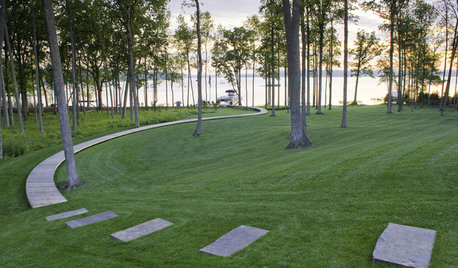How do I know what type of Bermuda I have?
There are many different types of Bermuda, but they generally fall into 2 main categories: Hybrid and Common.
The hybrid varieties include Midiron, Midfield, Midlawn, Tif varieties (Tifway-I, Tifway 419, Tifway-II, Tifgreen, Tifeagle), and Sunturf, which are all types of sodded Bermuda.
The common varieties include Arizona Common, Cheyenne, Jackpot, U-3, Sundevil, and Yuma, which are generally seeded varieties. There are some newer seeded varieties that have some similar characteristics of the hybrid varieties. These improved common varieties include Princess-77 and Riviera.
Contact your builder or sod farm to determine your variety of bermuda. If this is not possible the general rule of thumb is sodded bermuda is hybrid and seeded bermuda is common.
How do I fertilize my Bermuda?
Bermuda should receive 1lb of Nitrogen per every 1000 sqft, every 30-45 days in the growing season. Fertilization should begin about 2 weeks after spring green-up and continue through the early fall. P and K levels should be added based on soil tests. For organic fertilization, a high N fertilizer is recommended such as soybean or cottonseed meal to achieve the 1lb of Nitrogen, rather than some of the milder fertilizers such as corn meal. Urea can also be used as fertilizer for bermuda and sometimes called a "synthetic organic" fertilizer. For Urea, the preference is a coated slow release urea with a small percentage of fast release nitrogen.
Bottom line: Bermuda needs 1lb of Nirtrogen per 1000 sqft of grass every 30-45 days. Sources can be organic (grains), synthetic (Scotts), or Urea.
How high should I mow?
Unlike many grasses, Bermuda grows most dense when mowed low. Hybrid varieties can be mowed from .5 inches to 1.25 inches and Common varieties can be mowed from 1 inch to 2.5 inches. Mow only 1/3 of the total leaf height at a time to reduce stress (If you are mowing at 1 inch, mow again when it reaches a height of 1.5 inches).
Bermuda will have brown upright stems if allowed to grow too high. When mowing low for the first time, you will likely mow off all of the green and leave the brown upright stems. Gradually lower your mowing height to reduce this.
One note for cooler climates. Raising the cutting height prior to winter dormancy can protect against freeze damage, as can watering prior to an extended hard dry freeze.
How often should I water?
Watering should be done when your grass (not your dirt) shows the first signs of stress. These signs include slight wilting or blue-gray appearance.
When watering, grass should receive about 1 inch of water at a time to encourage roots to grow deep. 1 inch can be determined by placing shallow containers (tuna cans) around the yard and timing how long it takes to fill to an inch. It is not uncommon for this to be an hour or more.
The grass should not be watered again until it shows signs of stress. This will be at least a week in 100+ temperatures and maybe months depending on rainfall and temperature.
When beginning a deep watering program, or watering on a slope, several watering cycles during the same day may be required to prevent runoff while still providing 1 inch of water.
The deep watering also only applies to established turf. Newly applied sod or seed should be watered according to directions.
What do I do about weeds?
First of all, find out what type of weeds you have.
Many annual weeds such as crabgrass, and poa annual can be controlled with a pre-emergent. The pre-emergent prevents the weed seeds from germinating and should be applied 2 weeks prior to germination. Summer annual weeds (Crabgrass, etc.) can be controlled with a pre-emergent application in the early spring. Winter annual weeds (poa annual, etc.) can be controlled with a pre-emergent application in the early fall. Check with your county extension for specific timing in your area.
Post emergent herbicides can be applied to perennial weeds (Dallisgrass, Nutsedge, dandelion, clover, etc) and germinated annual weeds. Check the labels for targeted weeds, application rates, timing, and grass types. Hand pulling and digging may also be used to control weeds after they appear.
Is there an annual program?
Check with your county extension for specific timing in your area.
Early Spring Pre-emergent application for Summer Annual Weeds
Growing Season Fertilize every 30-45 days with 1lb N per 1000 sqft.
June/July Core aerate to relieve compaction, if necessary
Early Fall Pre-emergent application for Winter Annual Weeds
As Needed Post emergent weed control and fungus control













Related Discussions
Bermuda lawn care in San Antonio TX
Q
Advice needed for Bermuda lawn care
Q
Started My Organic Lawn Care 100% Today! Bermuda TIFWAT419
Q
Started Organic Lawn Care! Bermuda TIFWAY419
Q